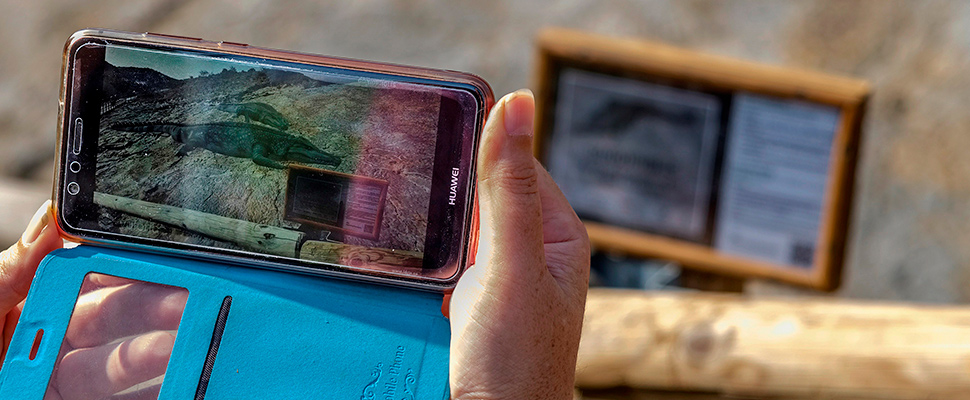Dinosaurs brought back to life with augmented reality

Augmented reality project brings fossilised dinosaur footprints to life at La Rioja site, Spain. 11 August 2019 EFE/Abel Alonso
Listen to this article
Leer en español: Dinosaurios vuelven a la vida con realidad aumentada
Dinosaur lovers will be able to see the creatures brought back to life thanks to augmented reality
The pioneering project was developed in Spain’s La Rioja where an outcrop of fossilized footprints, icnitas, has been discovered.
For the first time visitors will be able to see life-sized visualisations of the animals which left the indentations in the ground millions of years ago.
Two sets of tracks at the site of the Virgen del Campo de Enciso are believed to have been made by crocodiles.
A three-dimensional model of these swimming reptiles has been built and coupled with augmented reality.
They were formed by the dragging belly and hind legs of the crocodiles and cover a length of about 10 meters.
Visitors can download a free application on their mobile phone which allows them to see the creatures in real size, just above the footprints they left.
When seen through augmented reality people can appreciate how the crocodiles moved and lived with dinosaurs in their ecosystem.
Also read: Global retail tech spending to top $203 billion this year as stores play digital catch-up
The 3D recreation of the footprints also makes it easier to see how the animals dragged their teeth along a lake bed that was in this area 120 million years ago.
It is possible to make out a mark from the animal's tail and scratches made by the claws on its hind legs, which is why these traces were chosen for the project.
La Rioja is considered one of the most important sites in the world, with more than 10,000 fossilised footprints visible.
Virgen del Campo is one of the most significant within the region, with around 500 fossilized traces of prehistoric animals.
The objective of the initiative is to introduce augmented reality into the field of dissemination of the paleontological deposits.
t combines new technologies and learning to allow visitors to journey through the remains.
The aim is that by the end of 2020 or the beginning of 2021 all the technology on these icnitas is completed and that the movement of dinosaurs can be brought to life through augmented reality.





